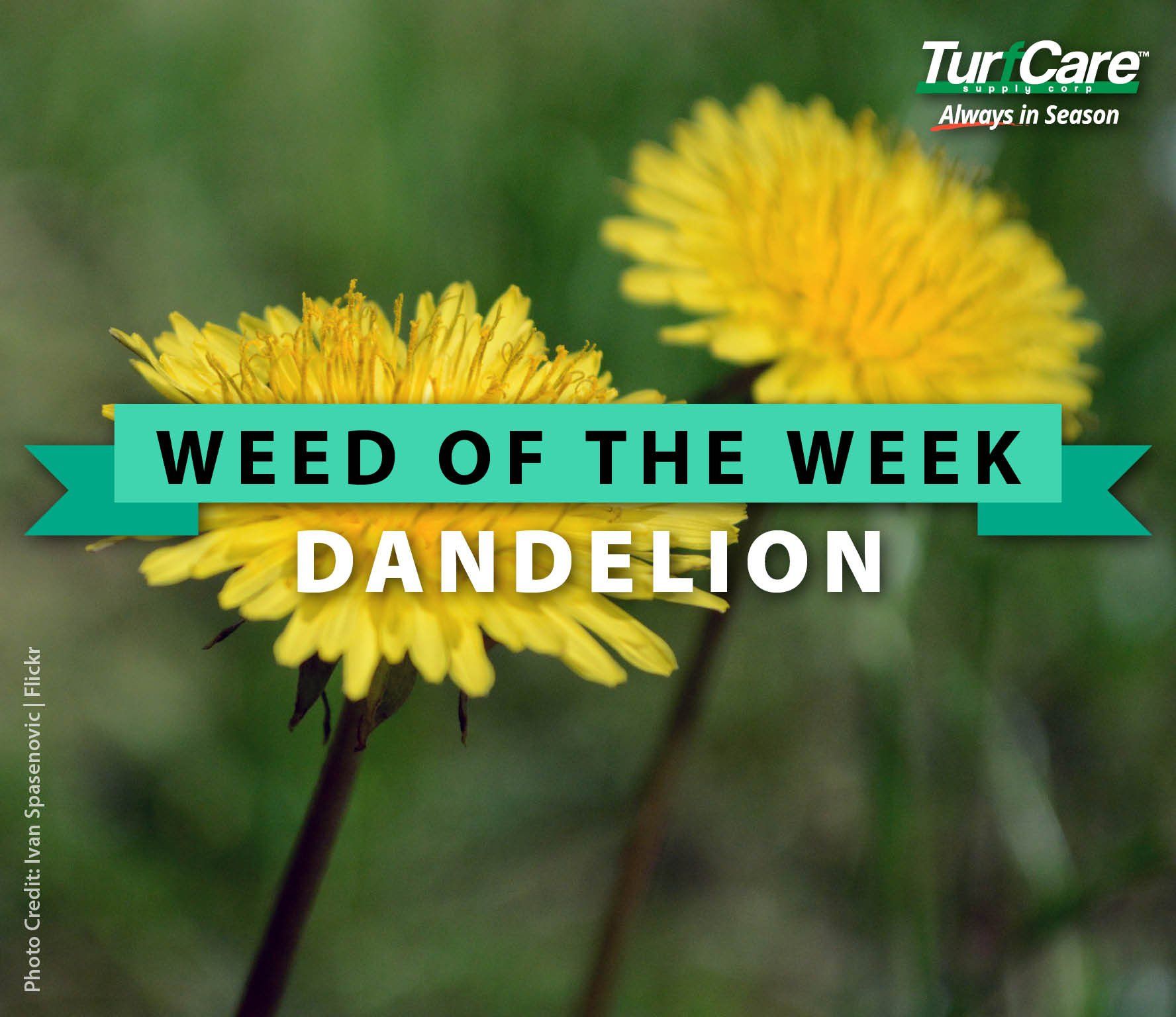Weed of the Week: Dandelion

TYPE
Dandelion is a well-known, pesky broadleaf perennial weed that can push out plants and grass all while sucking nutrients and sapping water from the surrounding area. This weed can range from 12 inches tall to 6-16 inches wide and has a fleshy taproot that can extend up to 3 feet deep. A single plant produces about 12,000-15,000 seeds that can be dispersed for miles, making it a difficult weed to manage !
HOW TO IDENTIFY
A dandelion has yellow flowers that mature into puffballs. This common lawn weed has deeply notched leaves and has a strong taproot (a straight tapering root growing vertically downward and forming the center from which subsidiary rootlets spring).
WHERE IT GROWS
This weed grows in lawns and gardens in mainly sunlit areas.
GROWING SEASON
May-October. Seed germination occurs throughout the growing season at or near the soil surface. Seeds germinate at soil temperatures of 50°F but around 77°F, germination can increase. The seedling stage can last 8-15 weeks depending on growing conditions and soil temperature. Although dandelion will slow its growth during cooler seasons, it has the ability to survive cold weather.
HOW TO MANAGE
Use a post-emergence herbicide (Herbicide that can be applied today) and/or, dig them out by hand and shovel (remember taproots run deep and if not removed all the way, dandelions will return). Mulching can also help prevent dandelion growth in garden. Unfortunately, because dandelion seeds can travel miles through the wind, permanent removal of it is nearly impossible so all approaches of removal must be repeated yearly.
- NOTE: It is important to prevent the weed from maturing to seed (white puffballs). Once the puffball appears the number of dandelions in your yard will multiply when the seeds are dispersed. Overall, the best prevention method for dandelion and any invasive weed is to maintain healthy, dense turf with a strong root system by adopting a regular lawn care routine including fertilization, soil amendments, proper mowing and watering as well as aeration and thatch management practices.
If all else fails, pick yourself one of the white feathery dandelions and give it a good hard breath and wish those pesky dandelions away!
(Turfcare is not responsible for the results if this method is chosen.)
For professional fertilizers, humic and AMP-XC™ enriched products available, please visit TurfCare’s online Product Catalog.
For green industry professionals or others interested in ordering Turfcare products, please contact our Customer Service to find a distributor near you.
The TURFReport Highlights:
Additional Articles and Insights
















